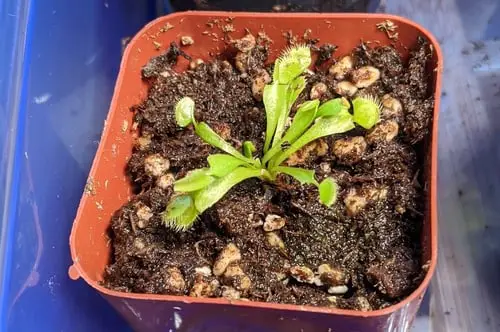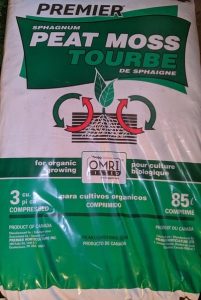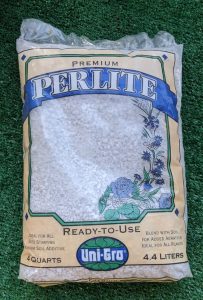After buying grown Venus flytrap, I decided to experiment and grow Venus flytraps from seeds. There were a few options in terms of germination media. Cotton is a common choice for many types of seeds. But, what about Venus flytraps?
Venus flytrap seeds can germinate in cotton. But, in the long term, cotton is not a suitable medium. A combination of sphagnum or peat moss with perlite or sand makes up appropriate carnivorous plant soil. This soil is optimal for germination due to its nutrition-less nature and drainage properties.
Growing Venus flytrap from seeds can be a challenge if you do not have all the information. This article will guide you through the process. First, assess the germination media. Then, review the germination process.
Venus Flytrap Cotton Germination
Venus flytraps require a particular environment to survive. To germinate, Venus flytraps require nutrient-free soil, pure water, mild-warm temperatures, a humid environment, and sunlight. The soil or media is important.
Some Venus flytrap owners germinate seeds in carnivorous plant soil; others germinate them in water. Germinating Venus flytrap seeds in cotton is possible but not the best option.
Cotton is not the best option due to a few reasons. Cotton might contain chemicals which kill the seedling. Also, cotton retains moisture, but it does not drain the water. The germination process takes a couple of weeks until the seeds start hatching. Without proper drainage, the cotton could exhibit fungus or mold and harm/kill the seedings.
The seeds of a Venus flytrap are tiny. They are only 2-3 millimeters long. Once they germinate, a tiny seedling starts growing. However, it takes months for it to grow substantially. Germinating seeds in cotton is not sustainable. The material might not only rot, but it is also hard to remove from tiny flytrap.
The Best Potting Media for Venus Flytraps
In the wild, Venus flytraps grow in inferior soil. They are not used to standard minerals or nutrients in their media. Therefore, standard potting soil is unsuitable for Venus flytrap.
Venus flytraps need nutrient-free, mineral-free soil to survive. A combination of peat or sphagnum moss with a draining agent is suitable media options.
It is possible to buy carnivorous plant soil online. Many nurseries sell their own blend in small bags or large batches. Just make sure to verify the soil is for carnivorous plants. It should be clear in the description. Buying ready-made carnivorous plant soil online is a practical yet costly option. A small bag of soil might cost you five to ten dollars for just a couple of pots.
You can also make your own carnivorous plant soil.
You can grow Venus flytrap in different potting media. First, you can employ pure peat moss or sphagnum moss. As long as the ingredients are pure and nutrient-free, you can germinate and grow Venus flytraps in pure moss. However, pure moss soil does not provide enough drainage and can cause fungus or mold issues.
For best results, mix pure peat moss or sphagnum moss with sand or perlite. Again, both the sand and the perlite must be pure (without any enriched components). The sand and perlite help break up and aerate the soil. Also, they promote drainage and allow for water to flow without getting stuck in compressed soil.
The ratios for making the soil do not have to be perfect. But, to simplify your search, I have made a few effective recipe options for carnivorous plants:
- 4 part peat moss and 1 part perlite
- 3 part sphagnum moss and 1 part sand
- 1 part peat and 1 part sand
- 1 part sphagnum and 1 part perlite
- 1 part peat, 1 part sphagnum, and 1 part sand
Venus Flytrap Seed Germination Instructions
In the previous sections, you explored some specific potting media for your seeds. Now, you will learn how to germinate Venus flytrap seeds.
Germinate your seeds by following the instructions below.
- Gather the appropriate materials: the potting media, distilled water (or reverse osmosis water, or rainwater), a pot or containers, a water tray for the container, and the seeds. Optionally, you can also employ a trowel and a mixing container.
- Grab the soil and moisten it with the water. Take your time mixing the soil with the water until the soil is completely soaked.
- Place the already soaked soil in the containers. Once there, use your hands to verify the soil is damped all the way through.
- Fill up the water tray with 1 inch of water and place the pot with the soil in the water tray.
- Now, it is time to sow the seeds. The seeds are tiny and can get lost. Avoid windy areas during sowing to avoid losing some precious seeds. Carefully put the seeds in the palm of your hand or on a plate. Grab a few and sow them in the container.
- Continue to sow all the seeds you have. Try to space them out in the container and consider using multiple containers if necessary.
- Do not cover the seeds with soil. If they are visible, press them lightly against the soil to ensure they won’t fly away and leave them. Now, the seeds are set for germination.
- Make sure to place the seeds in the right location and environment for germination. First, the water tray is very important. Venus flytraps require very moist environments to germinate and grow. Do not let the water tray dry up completely; refill the water as necessary. Also, the seeds need some exposure to sunlight. For germination, avoid direct sunlight for extended periods. Instead, opt for 4-8 hours of bright indirect sunlight. Finally, monitor the temperatures. Venus flytraps germinate in warm temperatures above 75 F (24 C). But, you must also avoid extremely hot temperatures above 90-95 F (32-35 C). The seeds and seedlings are delicate. Temperatures above 90 F can dry them out.
After two to three weeks of sowing, you should spot the first germinations. Do not get discouraged by the first days, when there is not much to see. Eventually, you will spot the seedlings spurring. During germination, make sure to keep the soil moist, provide enough lighting, and an acceptable temperature for germination.
The seedlings are tiny. But, eventually, after germination, you will be able to harvest tiny Venus flytraps. Then, you can transfer the baby flytraps into individual containers.
Avoid transferring the seedlings anytime before two to three months. In the first weeks of their life, Venus flytraps are very small and delicate. It is very challenging to transfer them. If you wait a few months, it is a lot easier, and there is less risk of damaging the plants.
The picture below is a baby Venus flytrap. It is about 7 months old. It has the exact shape of a mature plant, but it is tiny. The traps are just a few millimeters long.

A few more tips…
Windowsills are great locations for germinating seeds. I have germinated seeds indoors in a windowsill with great success. When temperatures are extreme in the outdoors, you can germinate seeds indoors and then transfer the plants to the outdoors later on.
Consider sowing seeds in multiple containers. Sometimes mold or fungus issues arise (this is how you can get rid mold in the soil). Sowing different batches of seeds increase your chances of success.
You do not need to sow all your seeds at once. As a beginner, you might want to experiment first with some and store the rest. You can safely store Venus flytrap seeds in the refrigerator for later use.
Further Care
Venus flytraps are fantastic plants to own. As a carnivorous plant hobbyist, I am always excited to share what I know with the community. And, growing Venus flytraps from seeds is an important step.
If you follow a guide, germinating Venus flytrap seeds is not particularly hard. But, the challenge does not stop after germination. Venus flytraps require a particular environment to survive. You can read the Venus Flytrap Ultimate Care Guide to be informed of their needs. Also, in the article, I share a downloadable Venus flytrap care sheet to share with readers. It is a short two-page summary that outlines ALL main considerations when growing Venus flytraps.
to share with readers. It is a short two-page summary that outlines ALL main considerations when growing Venus flytraps.



